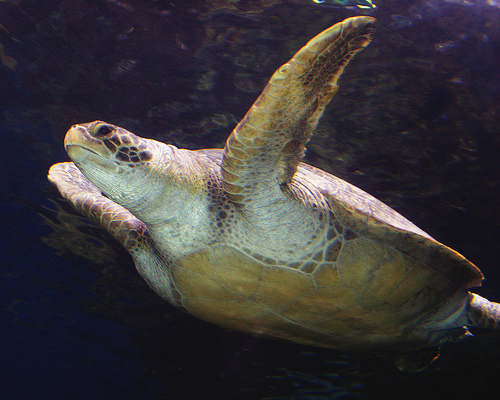
Ralphs
Discount tickets available at Ralphs for a limited time
The vaquita, a small porpoise found only in the northern Gulf of California in Mexico, is the world’s most endangered marine mammal.
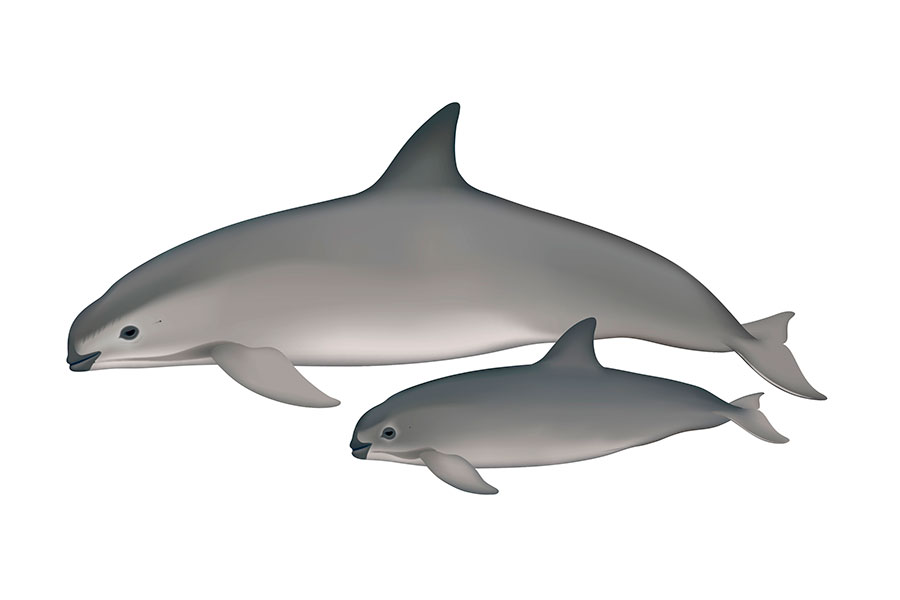
At about 5 feet in length, the vaquita is among the smallest cetaceans in the world. Credit: © Uko Gorte
At about 5 feet in length, the vaquita is among the smallest cetaceans in the world. The most conspicuous features are the relatively large black patches around the eyes and lips. Vaquitas consume a wide variety of fish and squid. The life span is approximately 20 years. Sexual maturation is estimated to occur at three to six years of age and females appear to give birth every two years.
© Uko Gorter
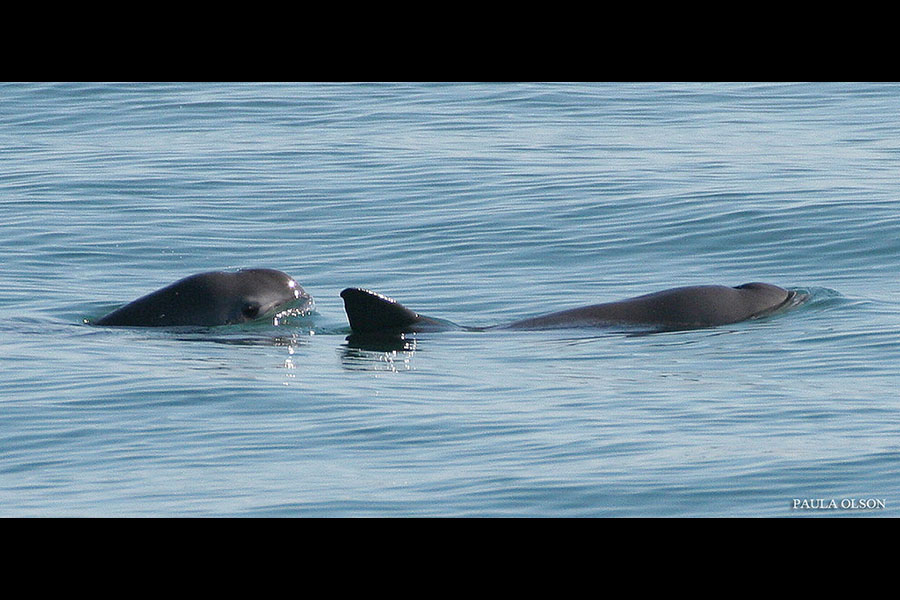
Vaquitas are found in small groups of one to three individuals; often just a mother-and-calf pair. Credit: Paula Olson for NOAA Fisheries
Vaquitas are found in small groups of one to three individuals; often just a mother-and-calf pair. They are shy, avoiding boats, and tend to be very inconspicuous at the surface, rarely jumping or splashing as some of their whale and dolphin counterparts do. This reclusive behavior, coupled with their small body size, makes them difficult to observe in the wild.
Image by Paula Olson for NOAA Fisheries
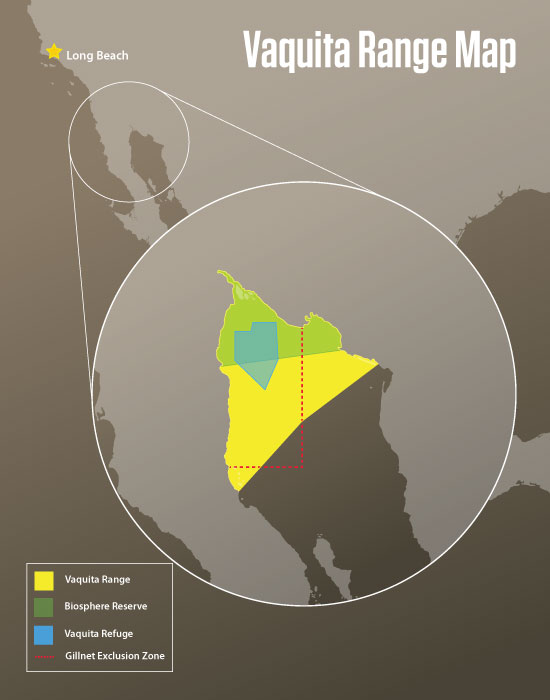
The vaquita lives only in the northern Gulf of California, Mexico. It has the smallest geographical range of any marine mammal. Nearly the entire population lives within a 1,519 square-mile area, an area less than a quarter of the size of metropolitan Los Angeles.
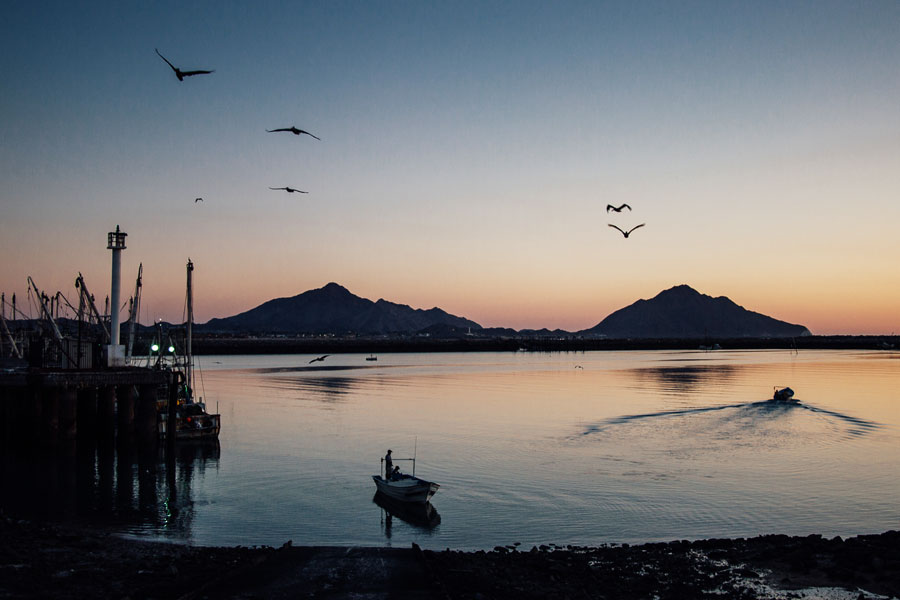
The highly productive waters of the Gulf are also excellent for fishing, producing fish, many species of invertebrates, including some of the world’s most valuable shrimp, sold for both domestic and U.S. consumption. Fishing is a major source of income for the local communities of San Felipe and El Golfo de Santa Clara. Credit: Alex Espinosa
The range of the vaquita coincides with most of the Upper Gulf of California and Delta of the Colorado River Biosphere Reserve, one of Earth’s most extraordinary marine habitats supporting a diversity of fishes, birds, marine reptiles, and marine mammals. These highly productive waters are also excellent for fishing, producing many fish and invertebrate species, such as lobster, crab, and some of the world’s most valuable shrimp, sold for both domestic and U.S. consumption. Fishing is a major source of income for the local communities of San Felipe and El Golfo de Santa Clara.
Image by Alex Espinosa
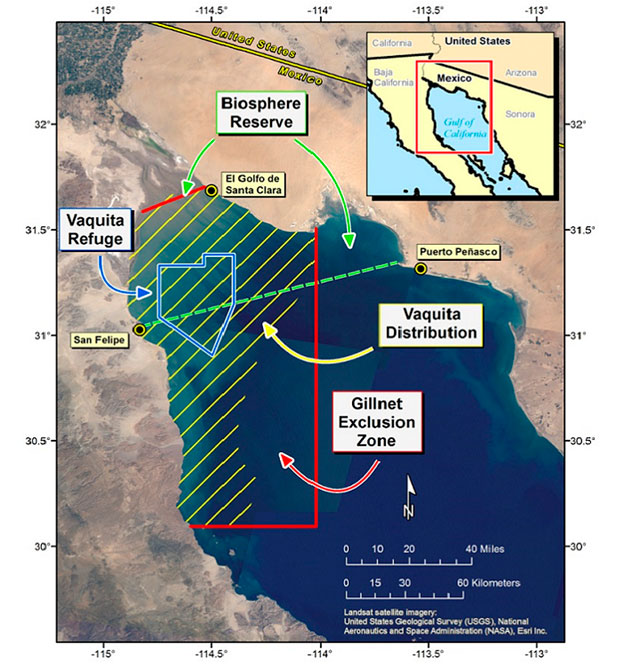
Credit: CIRVA
This satellite view of the northern Gulf of California shows the distribution of vaquita, designated by yellow crosshatching. The gillnet exclusion zone for the two-year ban is within the area bounded by the red line. The Vaquita Refuge, which remains a no-fishing zone, is outlined in blue.
Image by CIRVA

Discount tickets available at Ralphs for a limited time